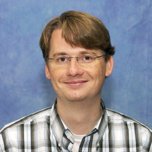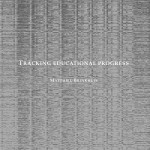 Cito
Cito
Psychometric Research Center (POC)
Supervisor
prof.dr. G.K.M. Maris (University of Amsterdam / Cito)
On December 9th 2014, Matthieu Brinkhuis defended his thesis entitled
 Summary
Summary
There is an increase in the use of online practice and learning environments in education. Many of these systems adapt both the content and the level of the practice material to the individual learner. Clearly, we expect the learners to develop, but in addition we also expect the properties of the system itself to change over time due to practice, feedback, education, etc. Since reporting and feedback mechanisms in these environments depend on properties of the system as a whole, such as the abilities of learners and the difficulties of items, we expect dynamically changing model parameters and intricate non-linear dynamics in the statistical modeling of data from practice and learning environments. Nonetheless, commonly used models in educational measurement assume parameters that do not change over time. In this thesis, new methods to deal with such dynamics are discussed, with a special focus on tracking progress, i.e., following development instead of modeling it. The trackers that are introduced are suitable for all sorts of educational measurement applications where learning, practice and feedback take place.
Project
The theory and practice of item sampling
In the seminal work of Lord and Novick, Statistical Theories of Mental Test Scores (1968), the idea of item sampling is put forth. Though Johnson and Lord (1958) already introduced the idea a decade before, it seems that it has not gained much popularity in neither literature nor applications since. One of the explanations for the lack of attention in this area might be the use of generalized symmetric means (gsm) (Lord and Novick, p. 238), which are a highly complicated set of expressions limiting the usability of the whole procedure.
However, responses gathered through randomly selected items hold several desirable properties for which other procedures than the one suggested by Lord and Novick can be employed. Purpose of this proposal is to develop and apply such alternative procedures, and thus to extend item sampling theory.
This project was financed by Cito and RCEC.
